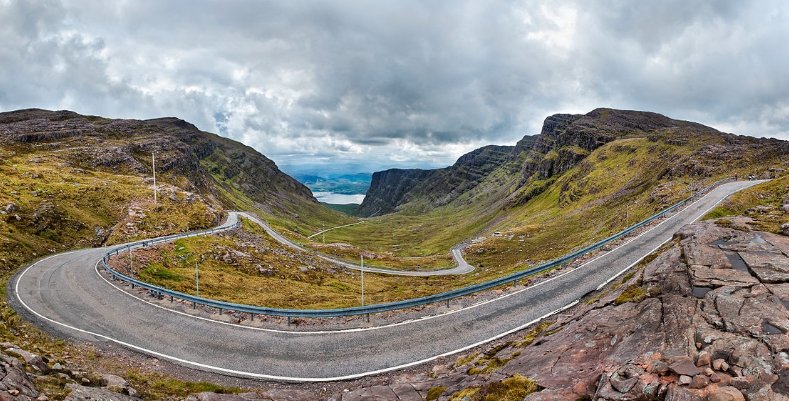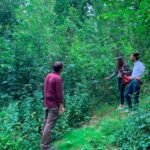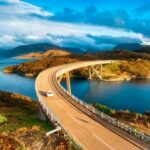It’s the kind of recognition that sparks both pride and protest: The Telegraph has named two of Scotland’s most iconic journeys — the North Coast 500 and the Western Isles route — among the “greatest road trips in the UK”. These drives promise sublime scenery and cultural discovery, but they also raise hard questions about sustainability and the fine line between adventure and over-tourism.
Where Britain’s Most Famous Road Begins
The North Coast 500 — or NC500 — may be just a decade old, but it’s already achieved legendary status. Touted as “Britain’s most famous road trip”, the route loops more than 500 miles through the far north of Scotland, starting and finishing in Inverness.
-
The route arcs through Wester Ross, Sutherland, and Caithness
-
It passes sheer cliffs, white-sand beaches, and ancient crofting communities
-
Highlights include Bealach na Bà, the UK’s steepest road ascent, and Duncansby Head’s sea stacks
But fame has come at a cost. In recent years, Highland communities have voiced growing concerns about the sheer volume of campervans, litter, and inconsiderate parking. The NC500 has become a case study in both the power and perils of viral tourism.
As a result, The Telegraph is now urging travelers to consider the route during autumn, when the Highland forests burn in hues of ochre and rust, and the roads — and loch-side campsites — are blissfully quieter.

Tranquility in the Western Isles
While the NC500 surges with tourism, its island counterpart offers a very different rhythm. The Western Isles route, stretching from Barra in the south to Lewis in the north, has emerged as one of Britain’s most peaceful and poetic drives.
Here, roads are narrower, the pace is slower, and the rewards are vast:
-
Ferry-hopping from island to island reveals Gaelic-speaking communities, untouched machair grasslands, and secluded beaches that rival the Caribbean
-
The Golden Road in Harris winds through lunar-like landscapes dotted with sheep and stone ruins
-
Callanish Standing Stones, older than Stonehenge, rise from Lewis’ moorlands, offering a link to a prehistoric past
The journey demands patience — and planning. Timetables, tides, and weather patterns still rule life in the Hebrides. But for those who seek isolation with soul, it’s as close to the edge of the world as a road can take you.
Roads Less Travelled
The recognition from The Telegraph is part of a growing trend: travelers are shifting from cities to coastlines, castles to car journeys. Road trips have become more than routes — they’re immersive slow-travel narratives stitched across the landscape.
In Scotland, the appeal lies in the variety. A single day on the NC500 can take drivers from storm-battered cliffs near Durness to glassy lochs lined with rowan trees near Ullapool. A ferry from Uig can land you in Tarbert, where the next leg of your journey includes roadside honesty boxes filled with home baking and local wool.
But with that popularity comes pressure. Many locals are calling for new infrastructure — from proper waste disposal to stricter regulations for wild camping. Some communities are exploring visitor caps or tourist taxes, while others are advocating for sustainable visitor codes similar to Iceland and New Zealand.
A Tale of Two Trips
While the NC500 and Western Isles routes share postcard views and dramatic coastlines, they offer profoundly different experiences:
| Feature | North Coast 500 | Western Isles Route |
|---|---|---|
| Starting Point | Inverness | Barra (via ferry) |
| Distance | ~516 miles | ~170 miles (excluding ferry legs) |
| Vibe | Bold, rugged, occasionally crowded | Quiet, introspective, deeply local |
| Season to Go | Autumn or late spring | Summer (for ferries & daylight) |
| Travel Type | Suited to car, van, or motorbike | Ideal for car and ferry-hopping |
| Notable Stops | Bealach na Bà, Smoo Cave, Dunrobin Castle | Callanish Stones, Luskentyre Beach, The Golden Road |
The Romanticism of the Open Road
Even with the challenges, Scotland’s great road trips remain deeply romantic — not in the candlelit sense, but in the Scott of the Antarctic, wild-weathered, find-yourself sort of way.
The NC500, though crowded at times, offers freedom. The Western Isles, by contrast, demand surrender — to wind, to sea, to silence. In both, travelers trade certainty for something richer: unexpected encounters with deer at dusk, fire-colored skies at 10 p.m., or a crofter’s tale told over a mug of tea.
And in a country shaped by its edges — geologically, culturally, politically — perhaps it makes sense that its finest journeys are those taken along the margins.


















